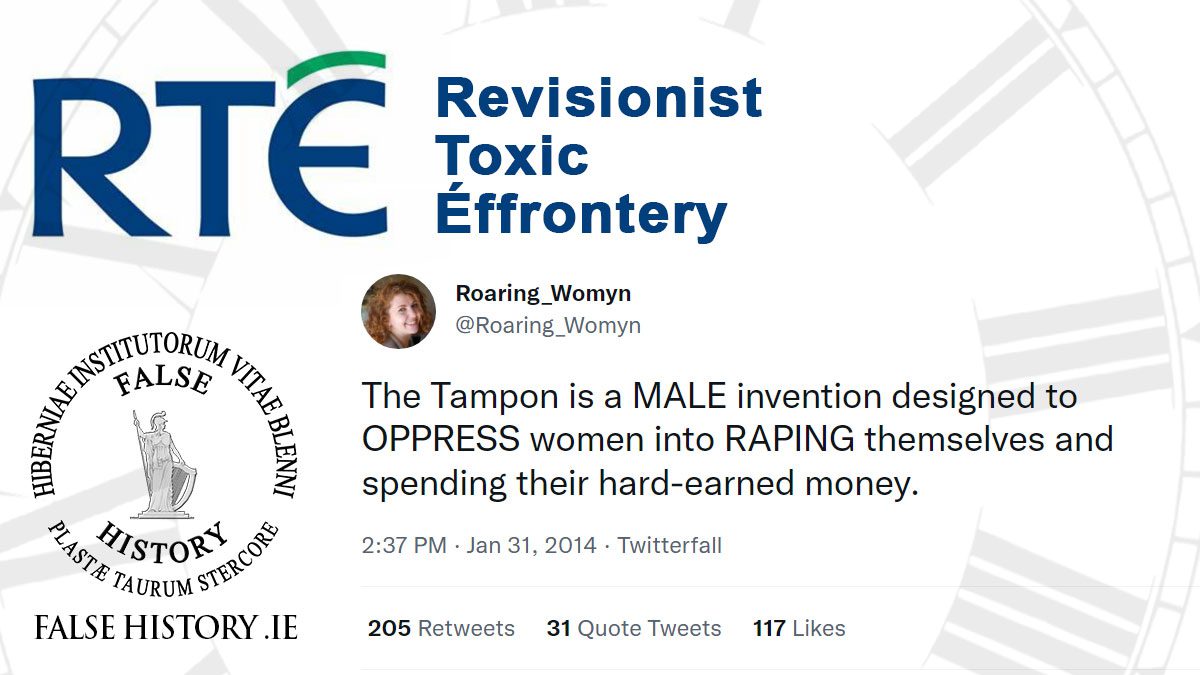In today’s Ireland, resplendent with its new generations of parchment holders, it never ceases to amaze how the dream of a college education for all…
Category: Latest -Press Watch
False history. Fake news. Distorted narratives served up daily with such relentless speed that it can feel as though truth itself has become an endangered species in Ireland. This section offers just a glimpse—a sampling of the most brazen examples—to show how easily facts are bent to fit an agenda. Read on, and decide for yourself what you believe when you finally see both sides of the story.
John Ryan or Bodger a Fakenews Merchant
Broadsheet.ie is a guttersnipe website which gives vent to a certain type of Irish prejudices and bias. There is no editorial control and so the…
RTÉ’s Anti-Catholic Agenda
RTÉ is perusing it anti-Catholic agenda with gusto again this week with not one, but two false history programmes. Historians are taught that events in…
Damien O’Reilly- A Fool Rushes in…
Better to Remain Silent and Be Thought a Fool than to Speak and Remove All Doubt Damien O’Reilly, broadcaster and farming journalist, has become one…
Fake Climate News from State Broadcaster
Recent flood events at Salthill in Galway were reported under the headline “Storm Debi: Further sign of climate change in Ireland”. However, the floods have…
Patrick Christys – Half Irish, half educated, full union jackass
Bias and jingoistic bias is to be expected from the GB News channel, but racism is never acceptable. Patrick Christys’ anti-Irish comments calling the country…
Childish Climate Change Behaviour
Climate change activism often involves individuals with a simplistic view of the world and a limited grasp of scientific principles. John Gibbons, an environmental journalist…
Cultural Prejudice Claims Paddy as its Victim
The fall of the Web Summit’s CEO Paddy Cosgrave was entirely his own fault. For some time, previous, Paddy had taken to social media, particularly…
The Useless Graduate – The cause of Ireland’s problems!
John McGuirk, speaking at the recent Ireland Uncensored event, blamed Ireland’s growing governmental nannyism and numptyism on the ‘useless graduate’. He explained that these are…
Lucy Letby – Why? And the Fake News.
BBC news bulletins of the 18th of August 2023 named nurse Lucy Letby as “the UK’s most prolific child serial killer in modern times.” That…









